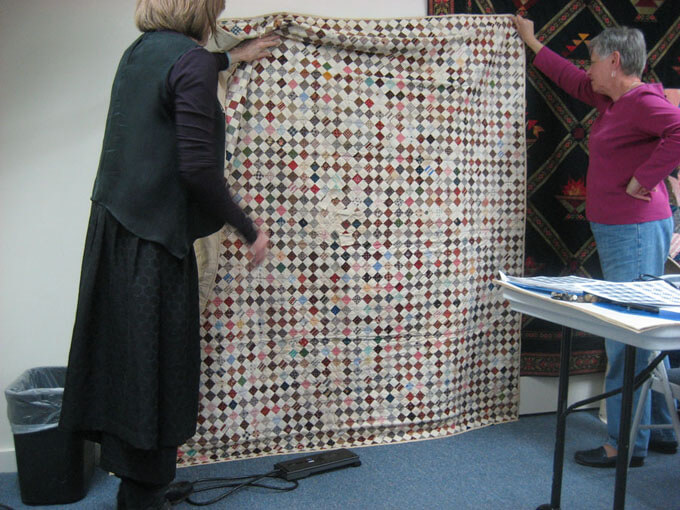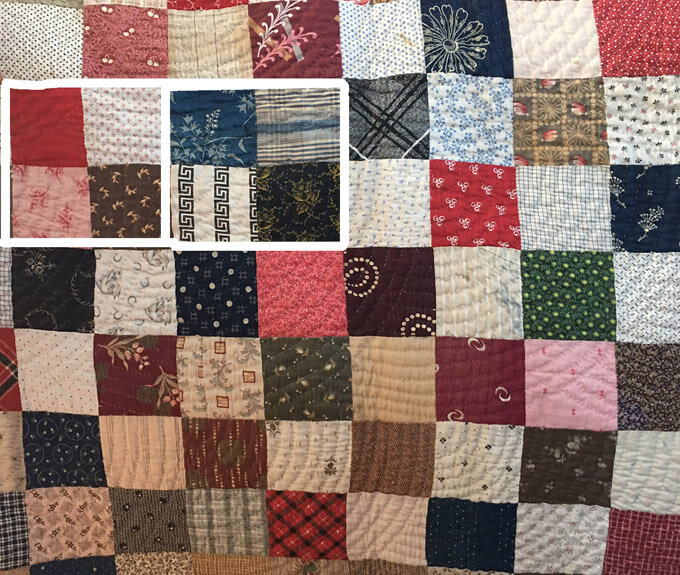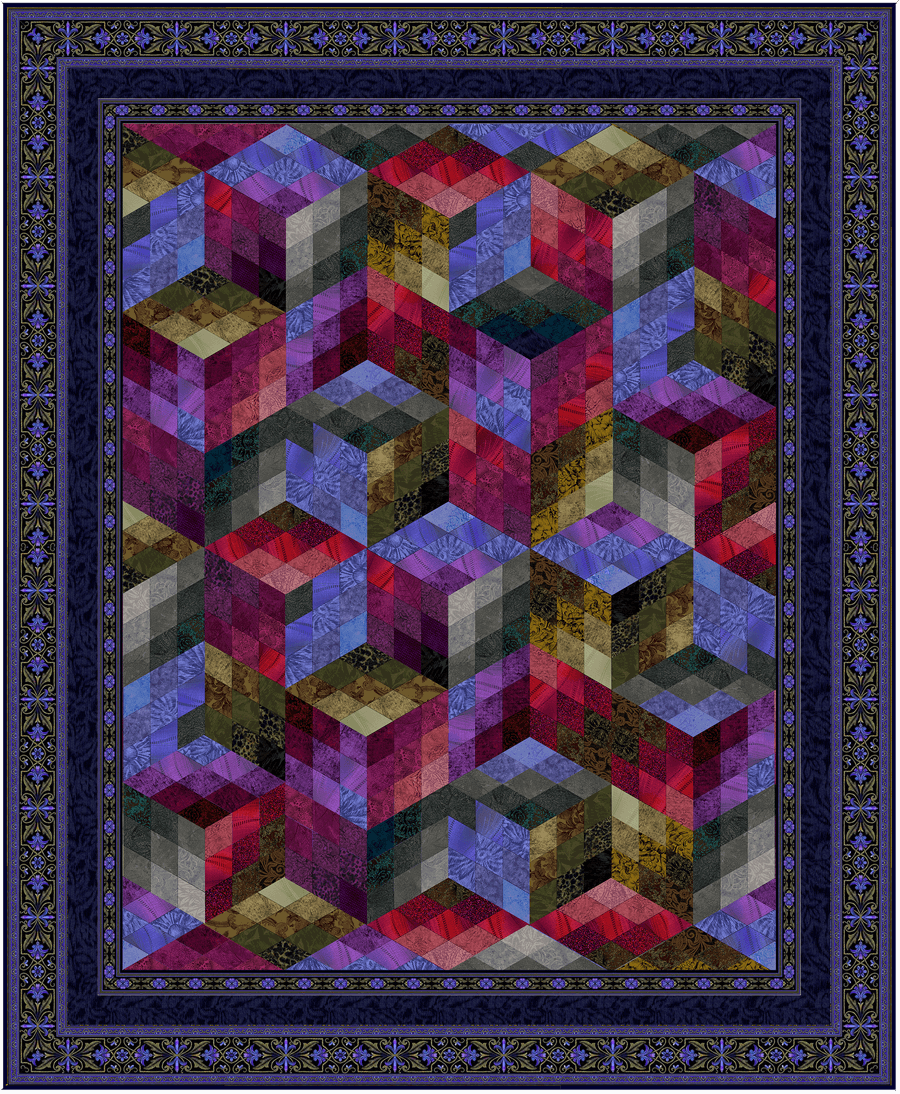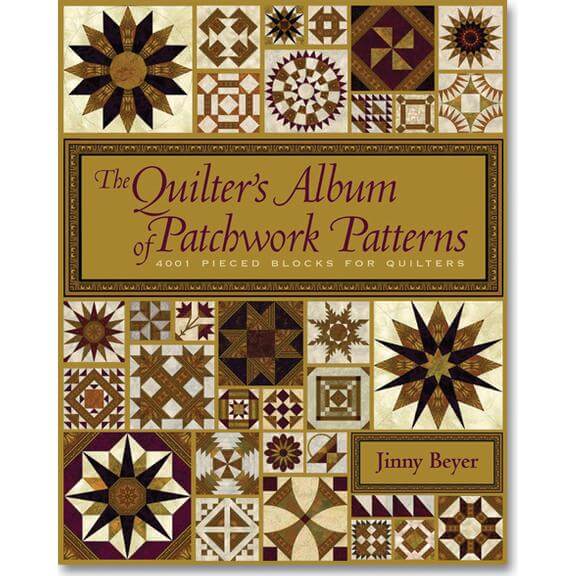
So, what is a Charm Quilt?
A charm quilt is a quilt that is usually made with a single shape and where each piece is cut from a different fabric. Squares, rectangles, hexagons, triangles and diamonds are probably the most common shapes used but others can be used as well. This is a fun project to work on in a quilting group, where you can trade fabrics with each other.
In this blog we start off with probably the easiest shape to work with, a square. The squares can be arranged in a variety of different configurations. But the best way to proceed is to have some type of unit. Then just sew units together and in the end the units can be arranged to balance out color.
The quilts shown here have basically the same layout. At first glance the first one, made with 3 ¾” finished size squares, appears to have those squares randomly sewn together. But a closer look shows four patch units with two squares in one block lighter than the other two. Then those squares are sewn together.


You can very clearly see the four patch units in Square Charm Quilt 2. Made with 2 ½” finished size squares, this quilt was very clearly made in four patch units with the lights quite a bit lighter than the darks.


Square Charm Quilt 3 is probably one of my favorite Charm Quilts. It was also constructed with four patch units. This time the printed fabrics were combined with a solid colored light fabric. The 1” finished size pieces are then sewn together. In the very center of the quilt is a patch with the following words, “This quilt contains 1,844 calico pieces, no two alike.” Several notes have been attached with basting stitches to some of the calico pieces. The notes contain the name of a person. My guess is that those particular fabrics came from the person whose name is on the notes.




Now you may be wondering why it is still considered a charm quilt even though all of those background fabrics are the same. You will often find a common background fabric in these quilts acting as a unifying factor. However, all of the other squares are different so it is still considered to be a charm quilt.
By now most of us have large stashes of fabric. Pull out those fabrics and stay tuned for more coming later this month on ways to make charm quilts with a variety of different settings. In the meantime, start collecting your squares or whatever shape you want to use.




























































